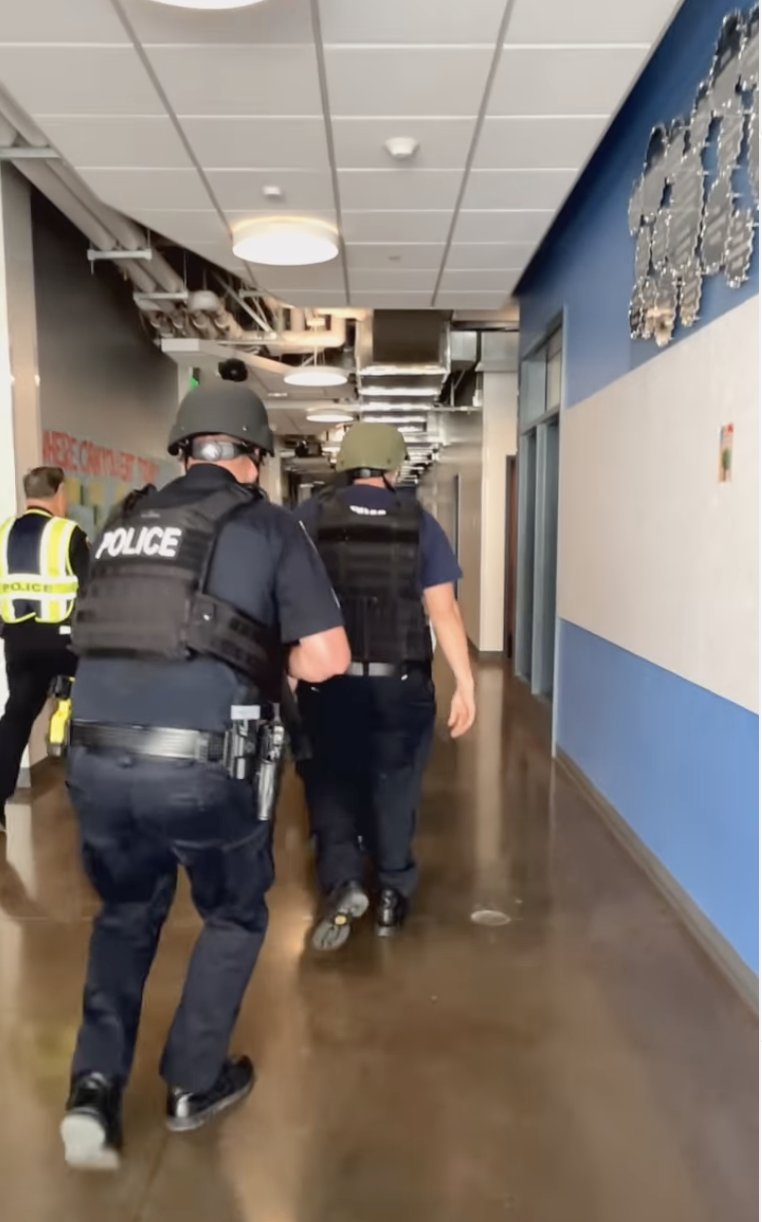Don’t do nothing. That is the central message in a webinar that trains people how to respond in an active shooter event.
Beginning Thursday, and repeated at 9 a.m. and 5 p.m. this coming Monday, the online training, organized by the U.S. Department of Homeland Security and the Sacramento Police Department, is free to the public.
“We’ve had fire drills since we were little kids in schools, even into our professional careers,” said Steve Smith, webinar instructor and 16-year veteran of the Ft. Lauderdale, Florida SWAT team.
Bomb threats, suspicious packages, chemical spills, gas leaks, he said, all have the same familiar response — evacuation. Active shooters rely on a surprise ambush attack, then they start moving, looking for open doors and easy access to additional victims. Pulling a fire alarm will draw people out into hallways and lobbies.
“We can all agree in most emergency situations that we’ve confronted, we have relied upon others to direct us where to go and what to do,” Smith said referring to threats that are stationary. “What’s completely different about an active killer situation, is that the threat moves. In order to defeat an ambush, you must respond back to it as quickly as possible without delay.”
Evade, isolate, then fight back
The one-hour course aims to de-program intuitive responses, like hiding under a desk that is not bulletproof and will only provide temporary protection. It includes techniques to more safely evacuate a building, ways to evade a threat, how to best isolate, how to barricade and where to be secure. In the last act of defense, it describes how to disable an attacker by hitting them on the head rather than focusing on the weapon.
According to the Gun Violence Archive, a nonprofit that tracks incidents of gun violence across the country, there have been 389 mass shootings and 23 mass murders with various weapons this year as of Thursday. Mass events are defined as four or more killings or injuries at one place and time. The number of such cases has risen from 289 in 2014 to 696 in 2023.
“Remember this problem moves and if I get stuck behind that barrier, eventually the threat moves and opens up an angle that puts me in a dangerous position.”
Steve Smith, safety instructor
The webinar showed samples of surveillance video of people responding to a sudden ambush. People dove to the floor or behind chairs, leaving themselves open. Being blind to a shooter’s view can often be only temporary.
“Remember this problem moves and if I get stuck behind that barrier, eventually the threat moves and opens up an angle that puts me in a dangerous position,” said Smith.
Unlike TV cop shows, bullets penetrate most furniture, walls and doors. True cover includes material a bullet cannot penetrate, like a concrete wall, a steel file cabinet or the engine block of a car.

Even during a true fire alarm, Smith advises against walking blindly into hallways and open-air environments. Slow down at corners and peek first. Smell for gun smoke and listen for sounds and movement in the building.
Out of caution, he recommends doing an “internal field trip” around the places we work and go. Know which directions the doors open, and what to use in case a barricade is needed. Know which windows open or have shatterproof glass. Make sure doors lock from the inside and, in an active shooter event, don’t attempt to isolate in a glass office space.
Security systems don’t prevent attacks
The size of the market for security technologies in schools is estimated at $800 million in 2024, and is expected to reach $1.42 billion by 2029, according to market research firm Mordor Intelligence. In 2022, Congress passed legislation that includes an additional $300 million to bolster school security.
But there is little hard evidence that gun-detection scanners and wireless panic buttons have prevented or mitigated catastrophic school events like mass shootings, according to a 2016 report on school safety technology by researchers at Johns Hopkins University.
“All security measures are just deterrence, but there’s been plenty of locations that have been attacked even if they have security,” said Smith, mentioning that a lot of attacks come from people already inside the system, like former employees or students.
Attackers will go into an area and do reconnaissance to find vulnerabilities.
“A lot of the deterrents come from people rather than the security technology, people who have been trained and are situationally aware,” said Smith. “People who challenge people and say, ‘Excuse me, ma’am. Where can I direct you? You’re not supposed to be over here in this unauthorized area.’ Are often the ones that prevent things.”
Those interested in the Monday webinars must register in advance for either the 9 a.m. training or the 5 p.m. event. The U.S. Department of Homeland Security also publishes a booklet covering how to respond to an active shooter.
The post Do you know what to do in an active shooter incident? Safety expert has surprising advice appeared first on Local News Matters.
